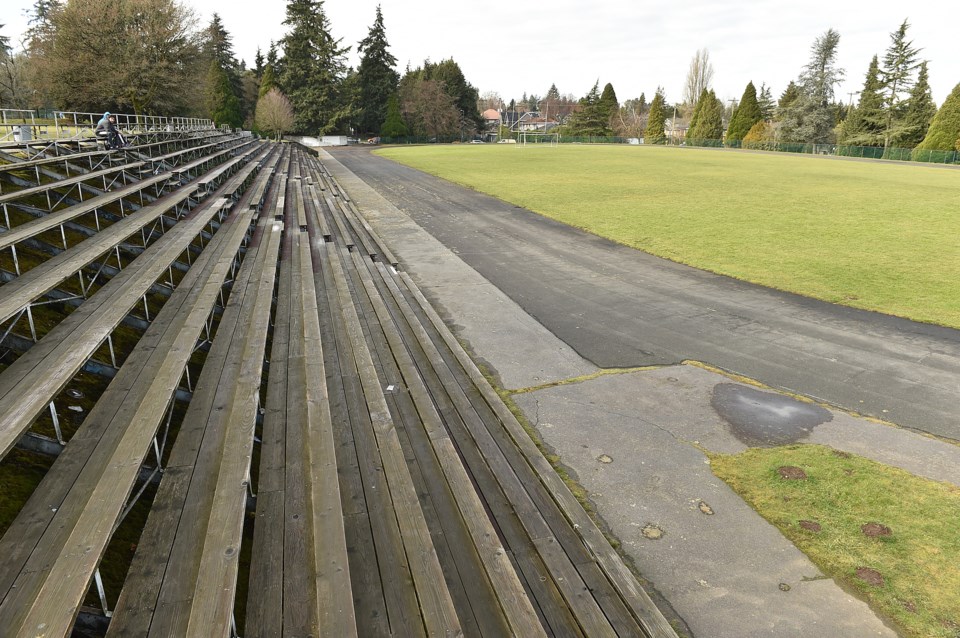Structures that will not withstand an earth tremor. Playing fields in poor shape. Grounds that are often litter strewn. Landscaping is rare if it happens at all, and weeds overtake garden beds.
What I’m describing is the condition of innumerable school properties within Vancouver’s boundaries. During evenings, weekends and school breaks, these properties lie fallow, with gymnasiums shuttered, rooms idle and soccer fields abandoned.
By contrast, in New York City, former Mayor Michael Bloomberg set about to change how school properties were used. Under the PlaNYC “Schoolyards to Playgrounds” initiative, hundreds of schoolyards were renovated and opened to the public during non-school hours.
NYC’s Department of Education and the nonprofit Trust for Public Land sought to improve many of the schoolyards through capital improvements, including play equipment, painted sports surfaces, trees and benches.
This is just one of many similar initiatives popping up in other cities to turn school properties into community hubs, with access to green, well-maintained grounds and facilities that come alive during non-class hours.
Vancouver is now faced with yet another potentially divisive debate about school closures. A 176-page report was recently tabled with a range of observations on several of the school district’s $7.6 billion worth of property assets.
If the previous Vision Vancouver-led school board were still in power, you could bet that the political rhetoric would already be at a fever pitch. The prospect of school closures here has been continuously leveraged by elected officials to drum up fear among parents, with politicians inevitably claiming to “save our schools” when they help to forestall a decision on a district property.
Vancouver has been criticized by other school districts for its unwillingness to take a sober look at what to do with its under-enrolled facilities, or to come to a decision on closing classrooms. The political pressure trustees have faced in the past caused the foot dragging.
School district studies indicate Vancouver has a surplus of more than 10,000 seats in classrooms sitting empty today, with a projection for those spaces to grow from 12,000 to more than 17,000. We can blame lower birth rates and housing affordability challenges for this trend here.
Instead of drumming up fear in our communities, I think it is time to take a look at the opportunities these demographic shifts are providing the district.
Every community in our city has a continuum that in many ways our school properties fail to adapt to. When many of our schools were constructed before the First World War, how could we have imagined the needs of today’s students — such as providing accessible spaces for young people with differing abilities?
What planner 100 years ago could have ever imagined our world full of wireless connectivity and the new economy arising from it?
No one back then — when average life expectancy was 69 years old — would have thought we must accommodate a society that has more people over age 65 than under age 15 as we do today.
What if school properties were part of a new paradigm that accounts for today’s aging society by providing community access for seniors programs? Our popular neighbourhood houses are currently bursting at the seams for lack of space.
What if we even considered building long-term care homes and day care centres by playgrounds to allow more families to “age-in-place” and reduce social isolation (full disclosure: I advocate for the seniors care sector).
We also have pent up demand for workforce housing — in particular, a need to house teachers and health care workers who are struggling to afford local housing. School properties should be eyed for this opportunity.
To accomplish any real change will require some bold systemic changes. Currently, innovation is hampered by the silos of government — where the district, city, province and even departments within each agency are not communicating effectively.
Perhaps setting up a new land trust governed by the district would help break down these barriers, and allow communities and district representatives to explore local needs by making best use of the grounds and facilities, and build 21st century learning environments.
This is the conversation I wish parents, community members and our politicians would engage in — one that sees hope and opportunity in the district’s future instead of fear and anxiety.



